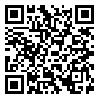BibTeX | RIS | EndNote | Medlars | ProCite | Reference Manager | RefWorks
Send citation to:
URL: http://johe.rums.ac.ir/article-1-92-en.html
Google Scholar
2- Faculty Member, Dept. of Health Education and Promotion, Health Faculty, Arak University of Medical Sciences, Arak, Iran. ,
3- Faculty Member, Dept. of Health Education, Health faculty, Arak University of Medical Sciences, Arak, Iran.

Accepted: 2015/04/18
ePublished: 2015/05/24
Background: Chronic low back pain (CLBP) is an important occupational injury. Musculoskeletal injuries, especially CLBP, are prevalent in the nurses, and can lead to reduced productivity, work absenteeism, and work disability.
The purpose of this study was to determine nurses' knowledge of the risk factors of low back pain (LBP) and their self-efficacy in coping with the risk factors, and to evaluate CLBP preventive behaviors in nurses.
Materials and Methods: This descriptive cross-sectional research was performed on 133 nurses selected randomly from 3 government hospitals affiliated with Arak University of Medical Sciences, Arak, Iran. The data collection tool was a questionnaire on demographic characteristics, knowledge, self-efficacy, and practice of the nursing staff in CLBP preventive behaviors. Data was analyzed using descriptive and analytical statistical methods and Pearson’s correlation coefficient.
Results: The mean age of the nurses was 32.1 ± 5.3. Our findings showed that in terms of LBP the nursing staff had average level of knowledge with a mean score of 60.2 ± 19.69 out of 100, average level of self-efficacy with a mean score of 55.9 ± 10.6 out of 100, and poor practice with a mean score of 43.9 ± 6.9 out of 100. The correlation between knowledge, and self-efficacy and practice was not significant, but self-efficacy showed a significant correlation with practice and being married (P < 0.05).
Conclusions: According to our study, most participants lacked appropriate knowledge, self-efficacy, and practice with regard to CLBP preventive behaviors. Since back pain strongly affects the performance and service quality of the caregivers, the Iranian Ministry of Health and the related universities should make necessary educational and managerial arrangements to present educational programs aimed at CLBP prevention in the form of university courses, posters, films, workshops, and etcetera.
| Rights and permissions | |
 |
This work is licensed under a Creative Commons Attribution 4.0 International License. |





